3 ways to display comments
Comments are everywhere
Facebook, Instagram, Youtube, Twitter, Reddit. These are all giant social media platforms that we have touched in some shape or form. Social media has become one of the ways in which humans communicate with each other and deepen their appreciation on topics with their peers. One of the key ways we engage with each other on social media is comments.
With over 50% of internet users having left an online comment, comments is a popular way for people to express their views. Having the ability to publish your own opinion and read what other people are thinking is incredibly enticing. It sparks a sense of curiosity within us to see what your peers are saying.
By knowing how comments are structured, it can help social media users understand what to look for in the comments section.
With that, there are two main questions to ask:
What is in a comment? And how are they displayed?
What is in a comment?
A comment usually contains these 3 attributes:
- Author name
- Date created
- Comment text

The “meat” of a comment is the comment text. It contains everything that the author wants to share with the world and is usually what users gravitate towards.
The author name and date created supplements the comment text. The author name allows users see who wrote, which is particularly helpful for reading comments that are only from your friends. Date created shows the recency of comment and users who enjoys reading the newest comments will find this attribute handy.
Now that we have a general template for what goes inside of a comment, how can we structure it?
How are comments displayed?
There are 3 main ways to view comments:
- Level 1 comments
- Level 2 comments
- Level N comments
Each display method plays a role in promoting engagement with people’s comments and the way users interact with each other is heavily influence by how the comment section is structured.
Each display method plays a role in promoting engagement with people’s comments and the way users interact with each other is heavily influence by how the comment section is structured.
1. Level 1 comments
Level 1 comments is a 1-dimensional comments section where comments have no replies. This can be thought of as a straight road with no exits; the driver can only forwards and backwards, similar to how users can only scroll up and down to read comments. This display type is extremely simple to use and easy to read, since all comments are organised into neatly into a single list. But, it is not without its limitations.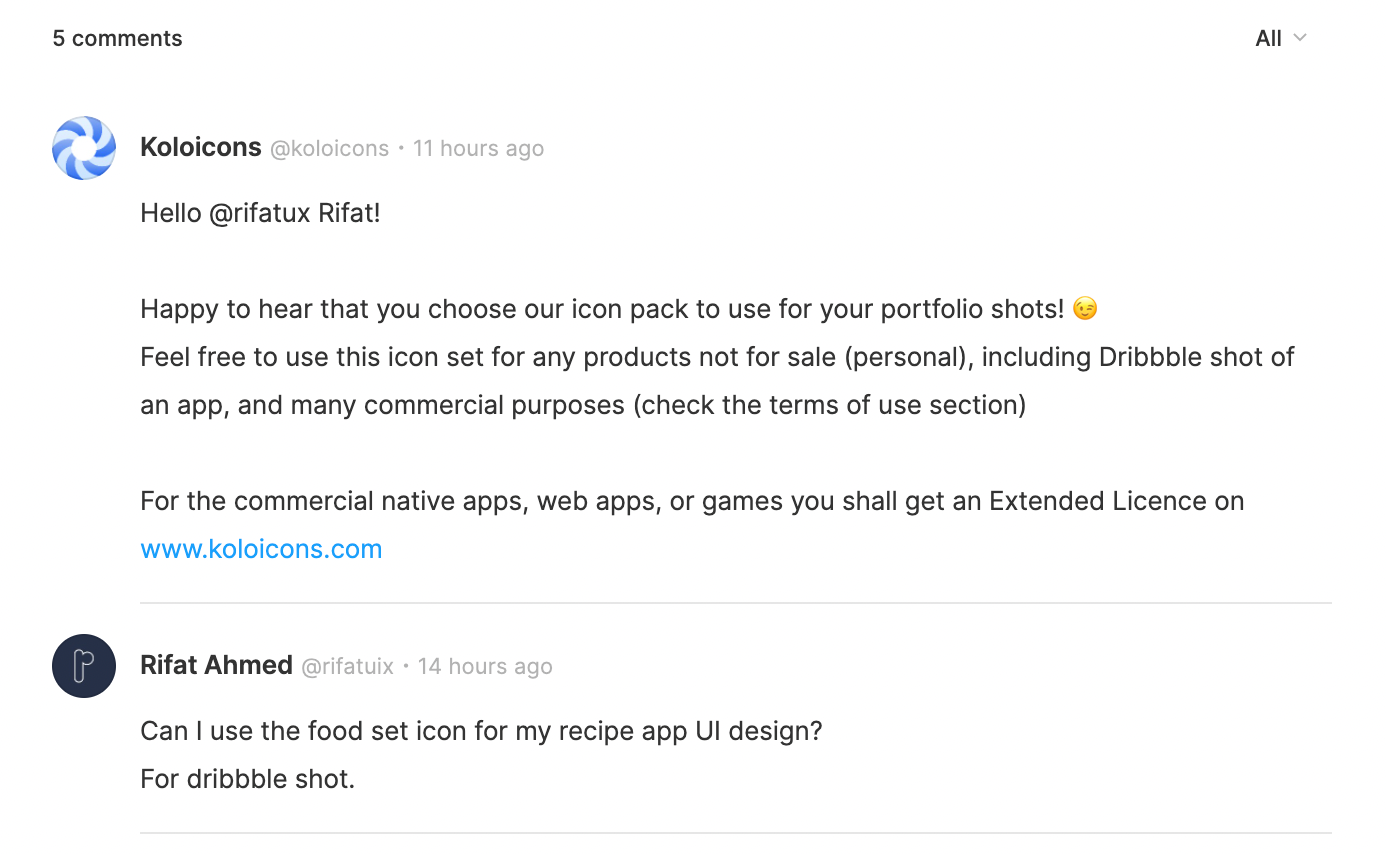
Above is an example of level 1 comments from Figma, a prototyping platform. Having a flat hierarchy means that users cannot post replies on other people’s comments. This style focuses on interacting with the post, instead of other users. Is there a way to improve it?
2. Level 2 comments
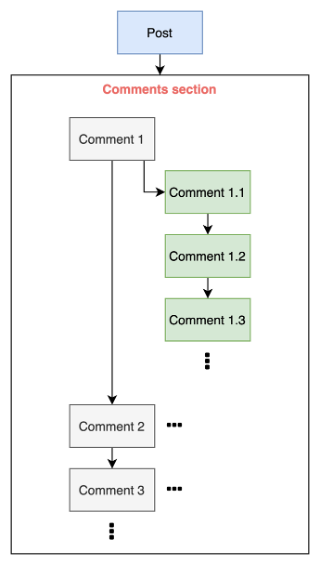 Level 2 comments is a 2-dimensional comments section where users see both comments and replies. If Level 1 is a road with no exists, Level 2 is a road with many exits, where each exit is like a reply thread in a comment. One of the great things about Level 2 is the ability to reply to other users. Now, users can not only start conversations about the post, but also between themselves. But what happens if I see a comment that is addressed to a reply? This is where Level 2 breaks down.
Level 2 comments is a 2-dimensional comments section where users see both comments and replies. If Level 1 is a road with no exists, Level 2 is a road with many exits, where each exit is like a reply thread in a comment. One of the great things about Level 2 is the ability to reply to other users. Now, users can not only start conversations about the post, but also between themselves. But what happens if I see a comment that is addressed to a reply? This is where Level 2 breaks down.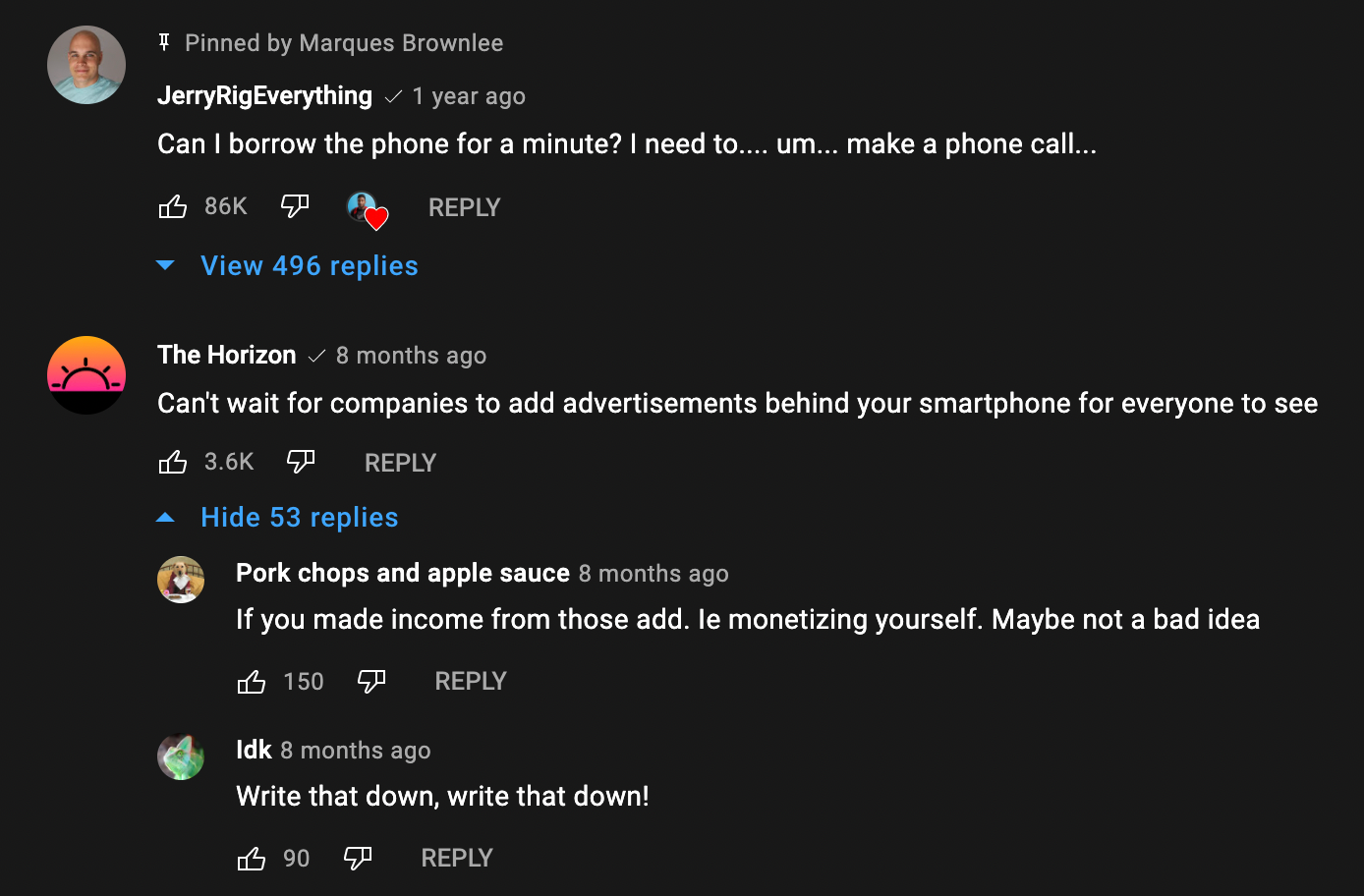
As an example, Youtube uses level 2 comments in the video’s comment section. Users can click on the “view replies” button and see replies addressed to the main comment. This makes the comments section much more engaging. But, seeing who is replying to who can give users finer control on which conversations to join. This is where level N comes into play.
3. Level N comments
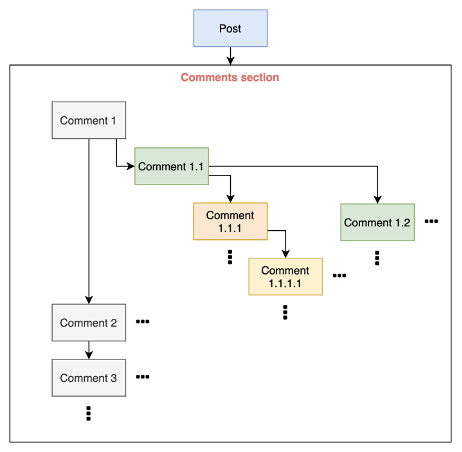
Level N is a N-dimensional comments section where comments and replies are nested within each other. Following the road analogy, level N is a road with many exits and each exits have many more exits … etc. Each of these exits is like a reply thread and it can be inside of other reply threads. This gives users the power to choose which nested reply thread to reply to, allowing for many different topics to co-exist under the same comment. As you can imagine, visualising this can be a lot to take in.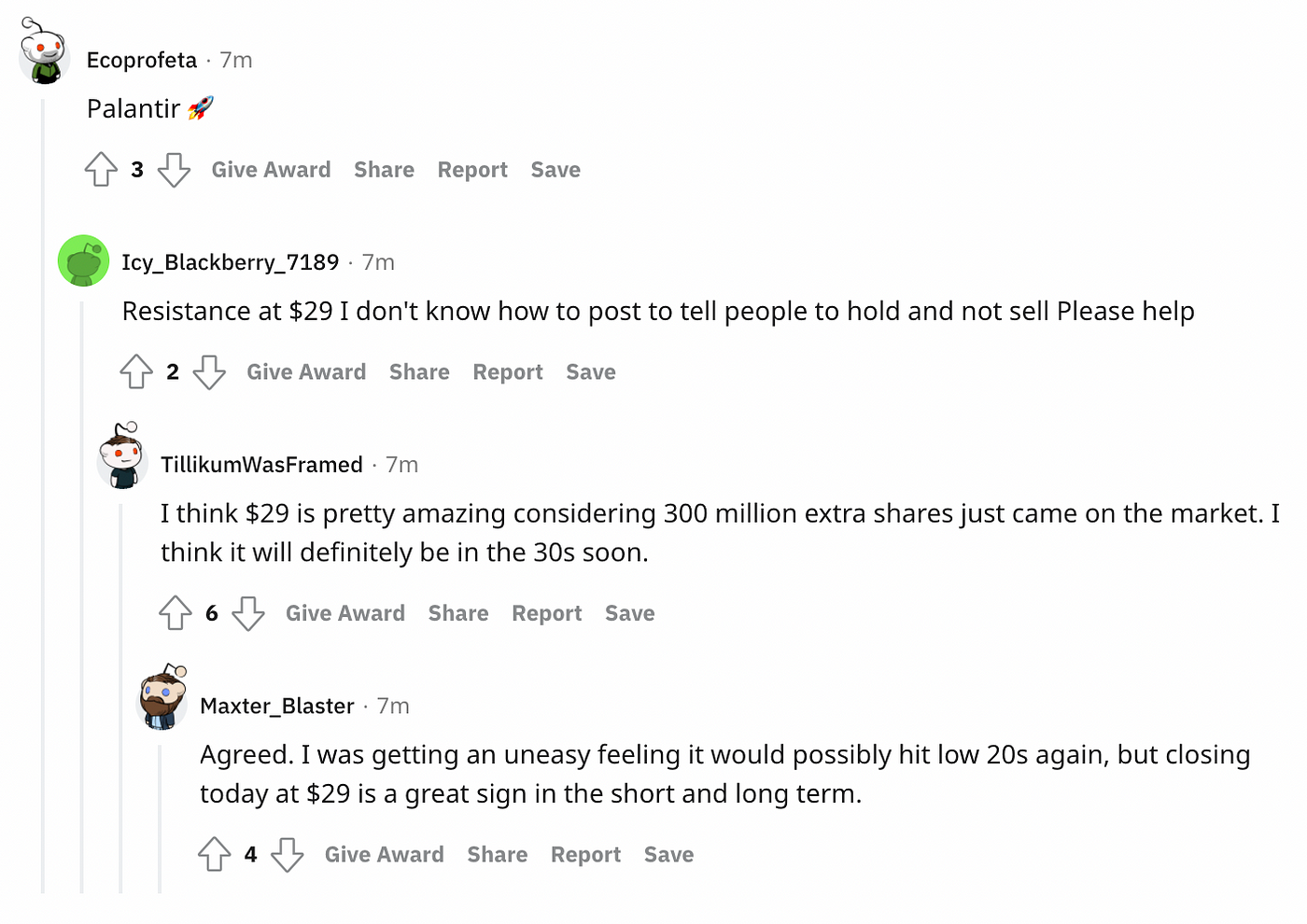
Level N is by far the most commonly used on social media, with platforms like Facebook, Reddit and Twitter all using this display style. Nevertheless, when there are too many nested replies or the reply thread is too long, the user interface becomes extremely crowded with indentations and comments. A good tip to navigate through this is to follow the thread line (vertical grey line in the picture above) to track the sub-conversations within a reply thread.
Level 1, 2 and n are all very different ways to show comments. The comments section can be as simple as a list of comments or as complex as a group of nested replies. All of which leads to trade offs with how readable it is. So the next time you scroll through the comments of your favourite social media, see what type of level it is and comment below!


































